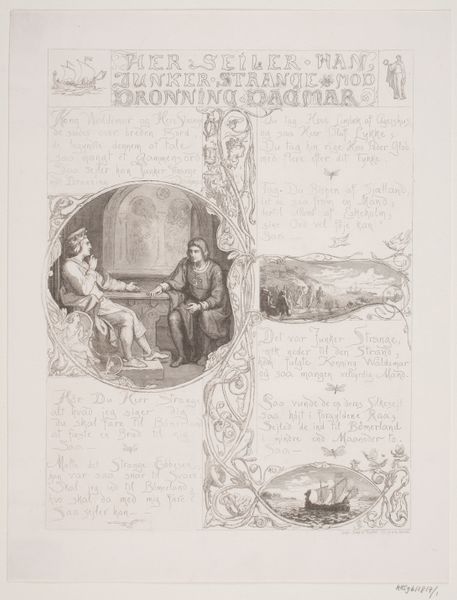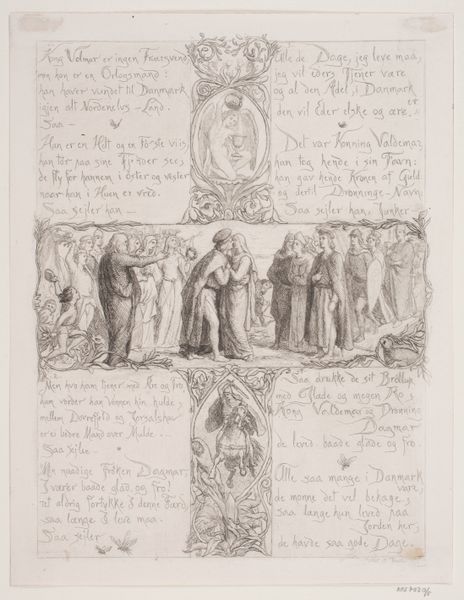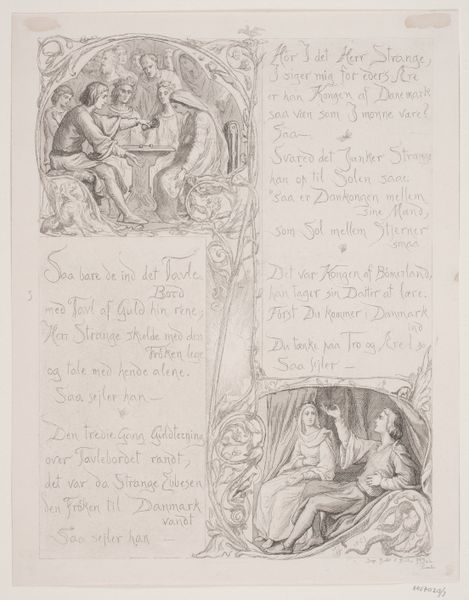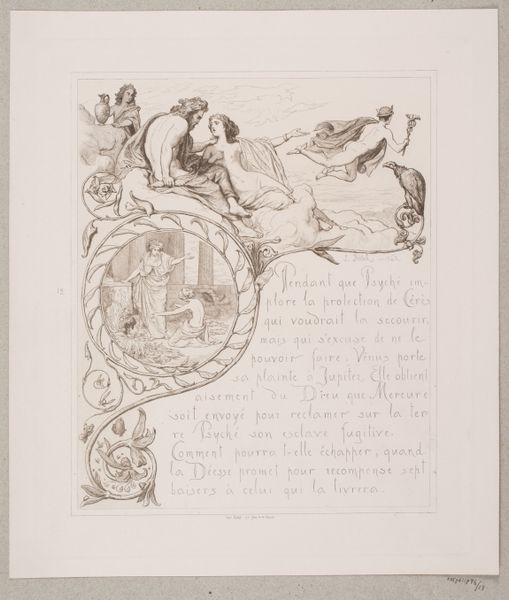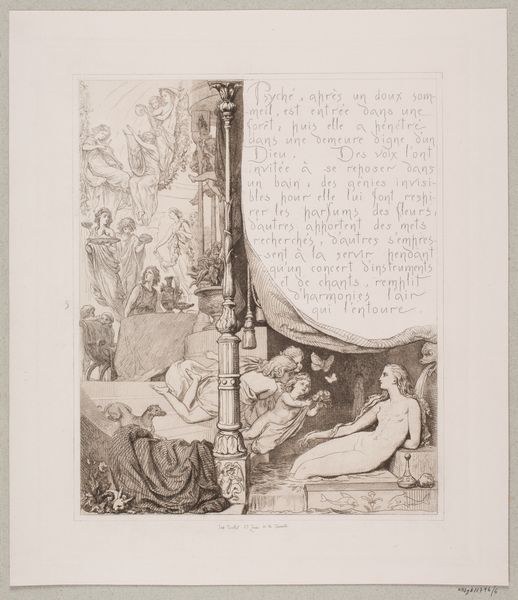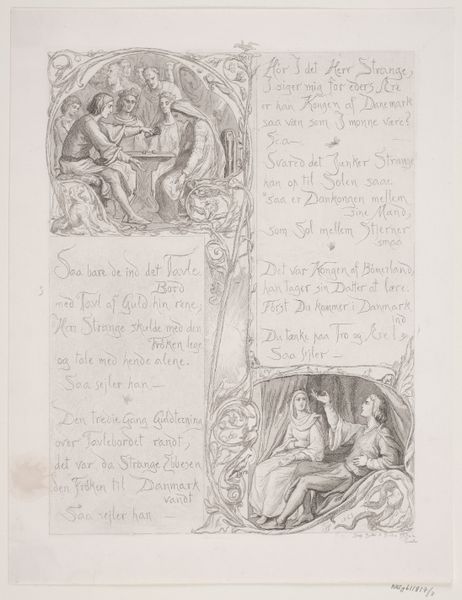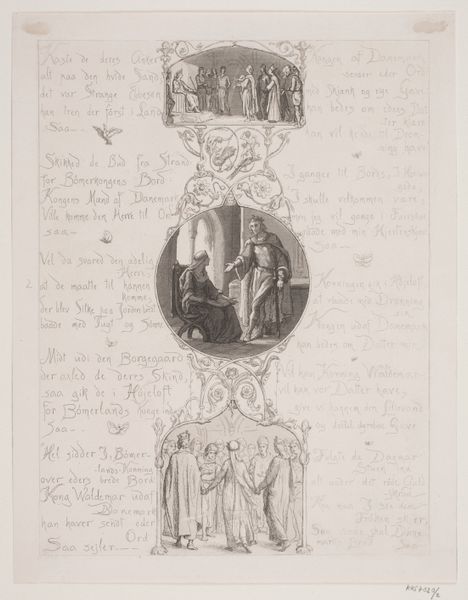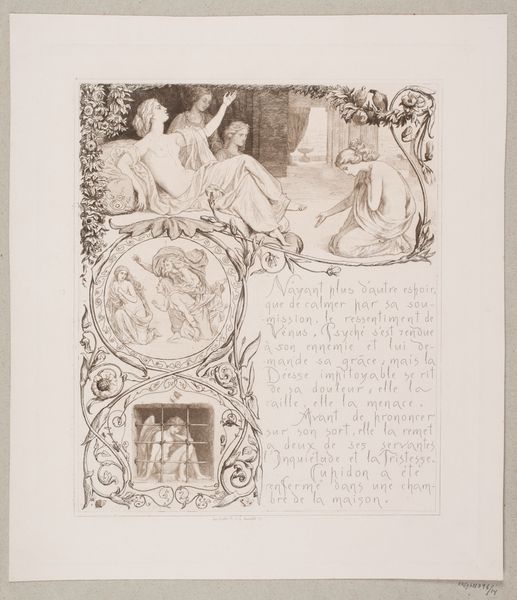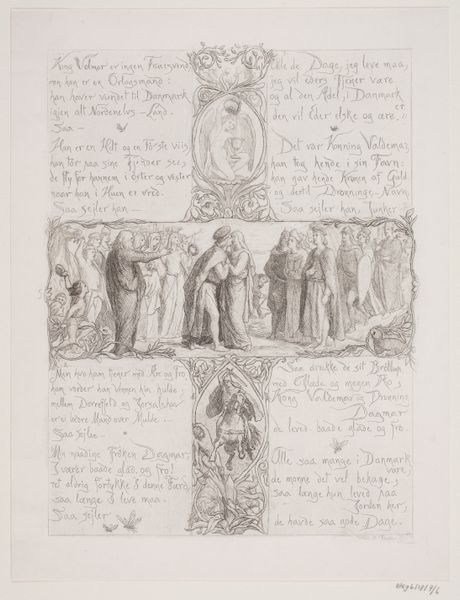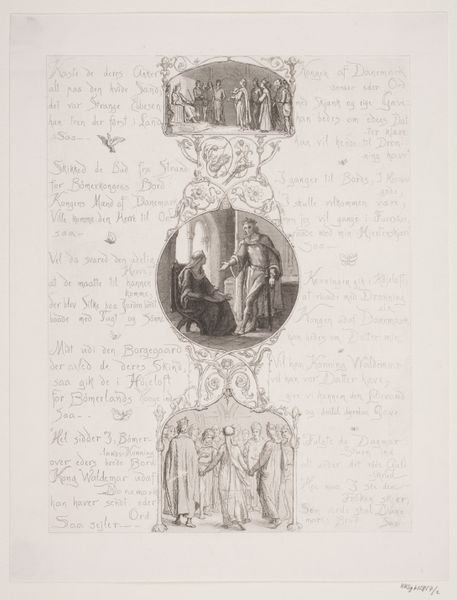
Illustration nr. 1 til "Visen om Dronning Dagmars ankomst til Danmark" 1863
0:00
0:00
Dimensions: 265 mm (height) x 208 mm (width) (bladmaal)
Curator: Look at this engraving from 1863 by Lorenz Frølich, "Illustration nr. 1 til "Visen om Dronning Dagmars ankomst til Danmark"… The tale of Queen Dagmar's arrival in Denmark. Editor: My first impression is of something quite fragile, like a faded memory brought forth from the distant past. There's a melancholic tone, very delicate. Curator: Frølich was deeply engaged in creating national historical narratives through his art. We see here, through a visual representation of the folk ballad, the construction of a romantic vision of Danish history, imbuing it with cultural weight. Note the careful use of the old Nordic script, evoking a connection to ancient sagas and traditions. This piece certainly embodies the nationalistic sentiments prevalent in Denmark at that time. Editor: The ship, rendered almost ethereally, adrift on the bottom; the seated figures at the top… What are the meanings layered into those emblems? Ships often symbolize journeys and passages. Here, the ship's smallness makes me think of vulnerability, perhaps reflecting Dagmar's own position entering a new land. The sitting king might imply authority and stability, what Queen Dagmar encountered when entering the new Kingdom. It is like reading a symbolic script. Curator: And the floral patterns intertwined throughout the piece! Romanticism embraced the natural world, and they frame and soften the more formal aspects, offering a sort of emotional context to what otherwise could become an impersonal history lesson. Note that Frølich, like many of his contemporaries, uses figuration to underscore nationalistic ideology, framing "Denmark" as feminine. This use, however unintentional, reproduces dangerous patriarchal ideas about land and nationhood. Editor: I appreciate the composition as a symbolic container itself, a vessel carrying not just the story of Queen Dagmar but the values and beliefs of a nation. It shows how romanticised events become encoded through symbols, turning history into something almost mythical in the public memory. This allows the audience to access, and remember, key historical elements that still resonates in contemporary minds. Curator: I see the contradictions you're getting at; it's an artefact layered with beautiful technique, clear nationalism and less consciously perhaps, the patriarchy and power imbalances underpinning nineteenth-century society. Editor: Yes, exactly. When examining pieces like this, we learn as much about those who created it, as about ourselves and our cultural identities. A great point of reflection to take with us as we exit.
Comments
No comments
Be the first to comment and join the conversation on the ultimate creative platform.
